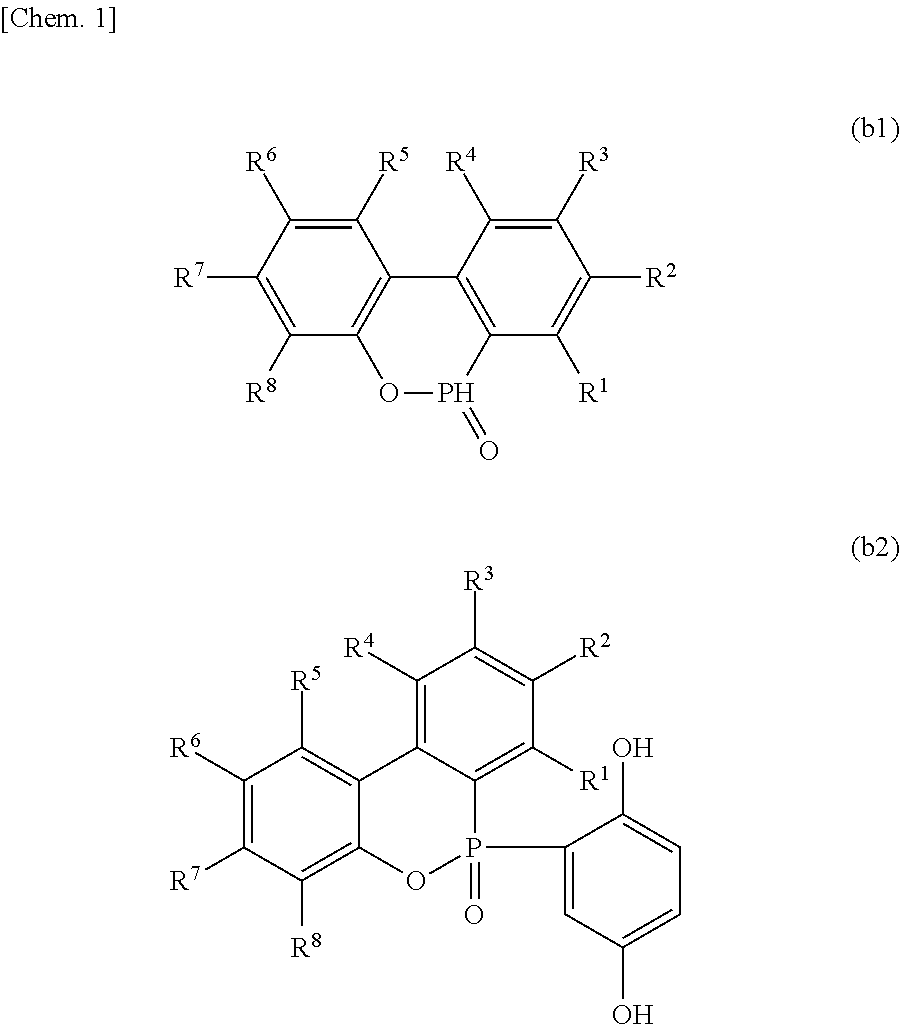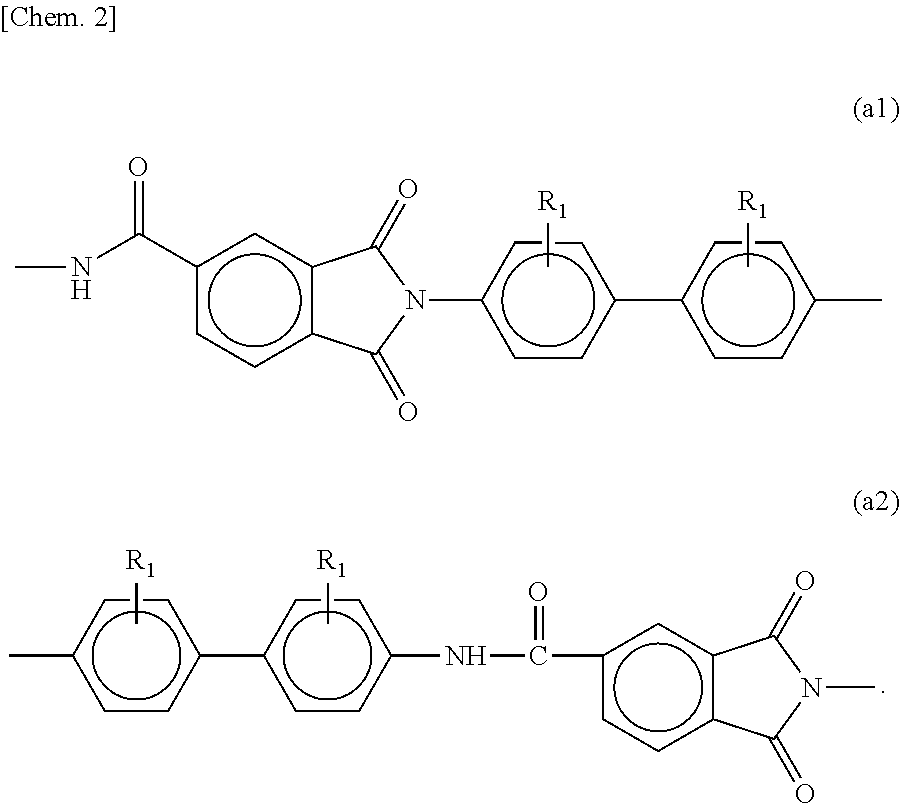Thermosetting resin composition, cured product of the same, and interlaminar adhesive film used for printed wiring board
a technology of resin composition and adhesive film, which is applied in the direction of circuit precursor manufacture, electrical equipment, group 5/15 element organic compounds, etc., can solve the problems of low linear expansion coefficient, poor melt-processability of resins containing such resins, and unsuitability for multi-layer processes. , to achieve the effect of excellent dimensional stability, low linear expansion coefficient and excellent meltability
- Summary
- Abstract
- Description
- Claims
- Application Information
AI Technical Summary
Benefits of technology
Problems solved by technology
Method used
Image
Examples
synthesis example 1
Synthesis of Polyimide Resin (A)
[0142]Into a flask equipped with a stirrer, a thermometer, and a condenser, 213.2 g of DMAC (dimethylacetamide), 6.29 g (0.036 mol) of TDI (tolylene diisocyanate), 37.8 g (0.143 mol) of TODI (4,4′-diisocyanate-3,3′-dimethyl-1,1′-biphenyl), 29.0 g (0.151 mol) of TMA (trimellitic anhydride), 12.2 g (0.038 mol) of BTDA (benzophenone-3,3′,4,4′-tetracarboxylic acid dianhydride) were supplied. The temperature was increased to 150° C. for an hour under stirring without generating excessive heat, and then the content in the flask was allowed to react at this temperature for 5 hours. The reaction proceeded with bubbling of carbon dioxide gas, and a brown clear liquid was yielded in the system. A solution of a polyimide resin (a resin composition in which a polyimide resin had been dissolved in DMAC) having a viscosity of 2 Pa·s at 25° C., a resin solid content of 20%, and an acid value of 16 (KOHmg / g) on a solution basis was produced. The solution of a polyimi...
synthesis examples 3 and 8
Synthesis of Polyimide Resin (A3) and Polyimide Resin (a2)
[0146]Solutions of polyimide resins (A3) was prepared as in Synthesis Example 1 except that BPDA (BPDA: biphenyl-3,3′,4,4′-tetracarboxylic dianhydride) was used in place of BTDA and that the amounts of materials were changed as shown in Table 1. Table 1 shows the biphenyl backbone content, the logarithmic viscosity, the weight-average molecular weight, and the acid value on a solid basis as in Synthesis Example 1.
TABLE 1SynthesisSynthesisSynthesisSynthesisSynthesisSynthesisSynthesisSynthesisSynthesisExample 1Example 2Example 3Example 4Example 5Example 6Example 7Example 8Example 9Polyimide resinA1A2A3A4A5a1a2a3a4Material (g)TDI6.2814.96.285.946.6022.16.285.276.62TODI39.325.039.335.839.814.039.332.039.9TMA29.129.125.429.129.129.118.229.129.1BTDA12.212.212.212.212.212.212.2BPDA16.727.8Amount of15.815.815.815.016.515.815.813.316.6decarboxylationBiphenyl312243303013482831content(mass %)Logarithmic0.430.400.470.290.610.39Unmeasurab...
PUM
| Property | Measurement | Unit |
|---|---|---|
| Percent by mass | aaaaa | aaaaa |
| Percent by mass | aaaaa | aaaaa |
| Percent by mass | aaaaa | aaaaa |
Abstract
Description
Claims
Application Information
 Login to View More
Login to View More - R&D
- Intellectual Property
- Life Sciences
- Materials
- Tech Scout
- Unparalleled Data Quality
- Higher Quality Content
- 60% Fewer Hallucinations
Browse by: Latest US Patents, China's latest patents, Technical Efficacy Thesaurus, Application Domain, Technology Topic, Popular Technical Reports.
© 2025 PatSnap. All rights reserved.Legal|Privacy policy|Modern Slavery Act Transparency Statement|Sitemap|About US| Contact US: help@patsnap.com



